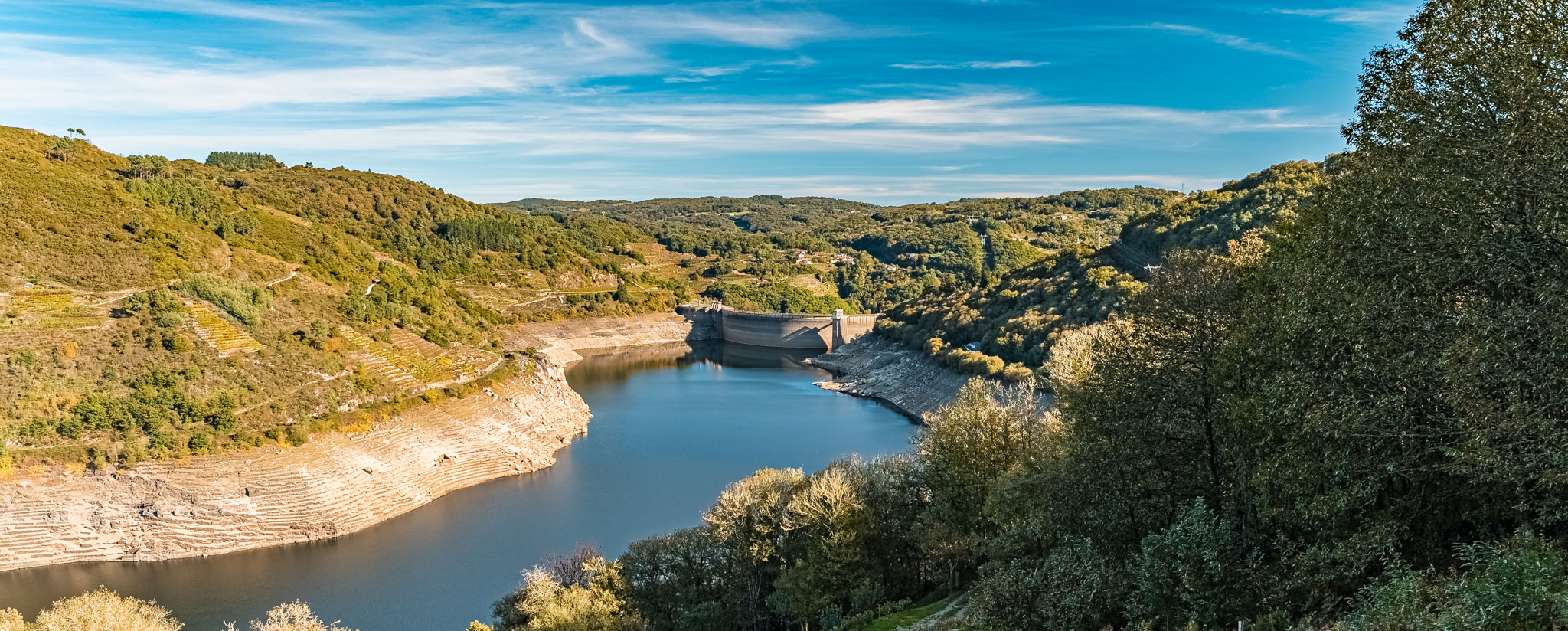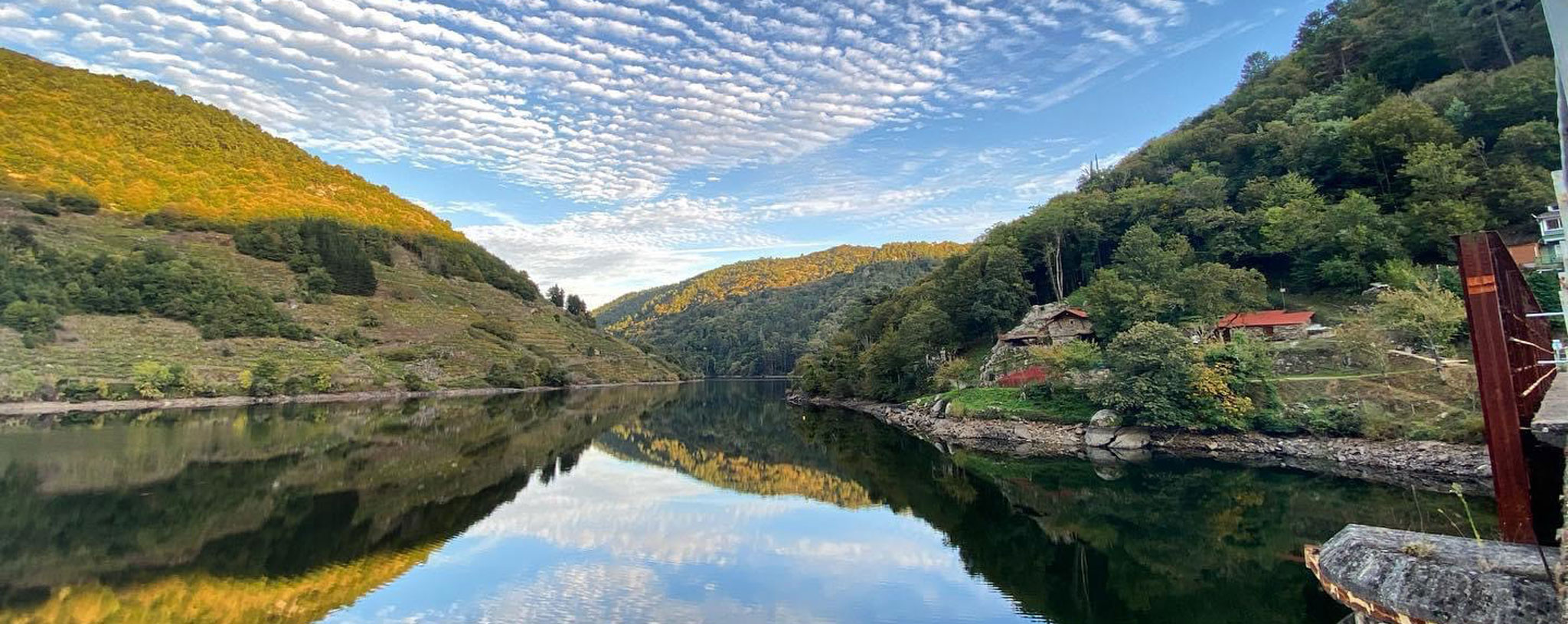Miño Banks
Natural and landscape heritage
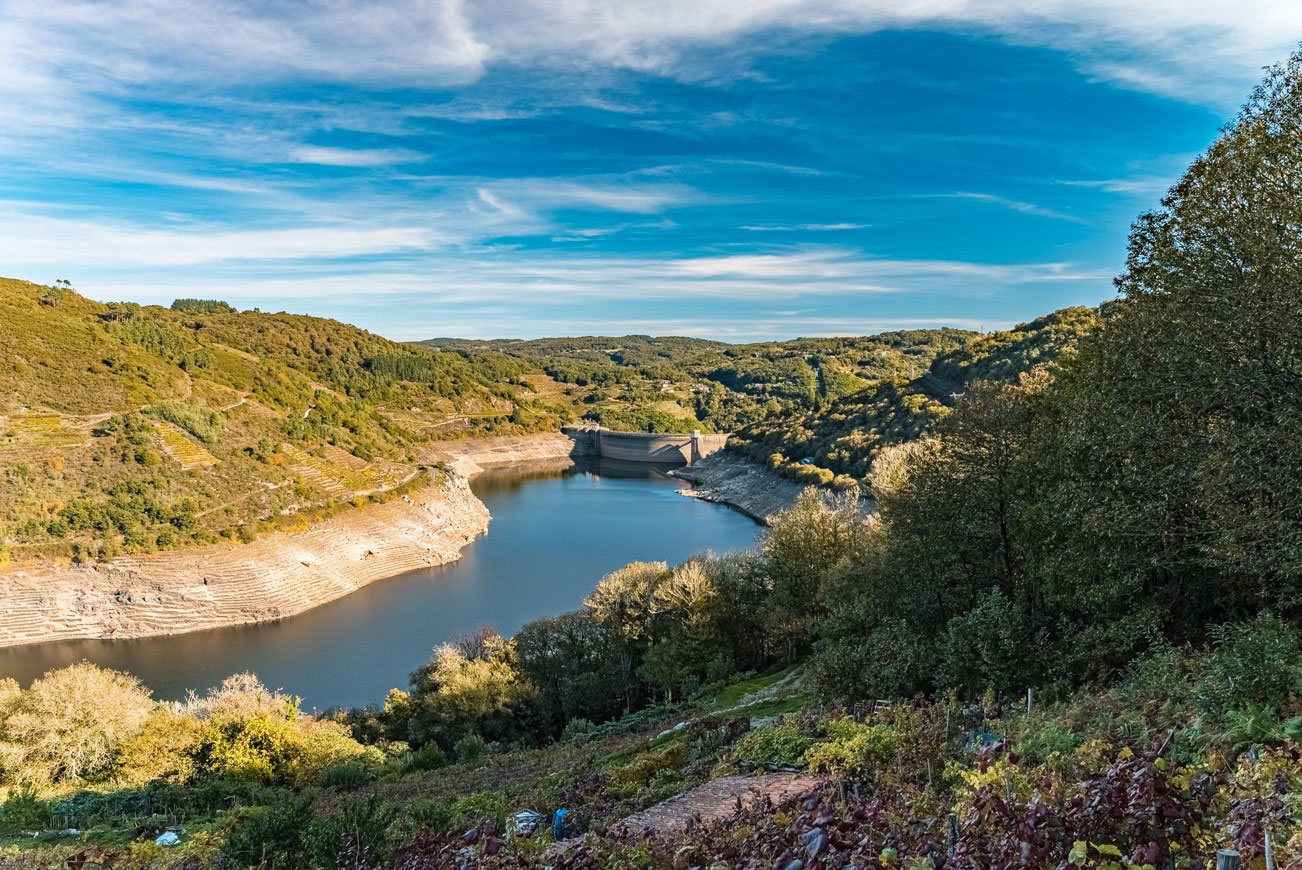
As it passes through the Ribeira Sacra, the Miño river meets the Belesar reservoir (in Chantada-Saviñao) and the Peares reservoir (in Carballedo-Pantón). In the tails of these reservoirs today the vineyard is still cultivated and the tradition, that existed before part of this unique landscape was drowned under the waters of the Miño, are maintained.
The Belesar reservoir, inaugurated in 1963, is the first wall that the Miño River runs into from its source in the Sierra de Meira to Chantada and Saviñao, being in its day one of the largest hydroelectric complexes of Europe with 129 meters high, the work of engineer Luciano Yordi de Carricarte. This dam left underwater so many memories and experiences of the inhabitants of more than 20 disappeared villages, such as Porto, Pincelo or Mourulle and also Taboada, Chantada or Portomarín (the old town was submerged saving the church, which was moved), currently considered the gateway to the Ribeira Sacra.
4 km from the Belesar reservoir, downriver, we find the town of Belesar, where the Miño River is once again navigable to the Peares reservoir. At 94 m high, in 1955 it was the first reservoir built on the Miño. This is the most popular area for catamarans and pleasure boats, since the flow variations tend to vary very little compared to those of the Belesar dam. Under these waters, towns such as Sernande have also disappeared (here was the Casa do Barqueiro, concessionaire of the passage by boat on the Miño).
Fortunately, some churches of great cultural value, such as Santo Estevo de Chouzán and the Romanesque church Xoan da Coba, were relocated to a new location under the supervision of the architect Pons Sorolla.
Although these hydroelectric constructions reported great economic benefits and progress for the area at that time, they ended forever with a way of life characteristic of the riverbank and with its submerged natural and cultural heritage. Luckily, all that knowledge endures in the memory of our elders, and is passed down from generation to generation. Thanks to them we know that, although we cannot go back, we must preserve and care for our heritage so as not to forget our origins and maintain our way of life for future generations.
This is a story experienced in the first person at Casa das Xacias. The sisters Daria and Rosalía, who lived there until 1980, as well as their heirs David and Cándida, whose vineyards and winery were left under water, wanted to transmit the values and experiences of this way of life “da ribeira”. Today, David’s granddaughter continues to tell her young daughters how she used to live on the banks of Pesqueiras when she used to cross the Miño by boat to go on a pilgrimage.
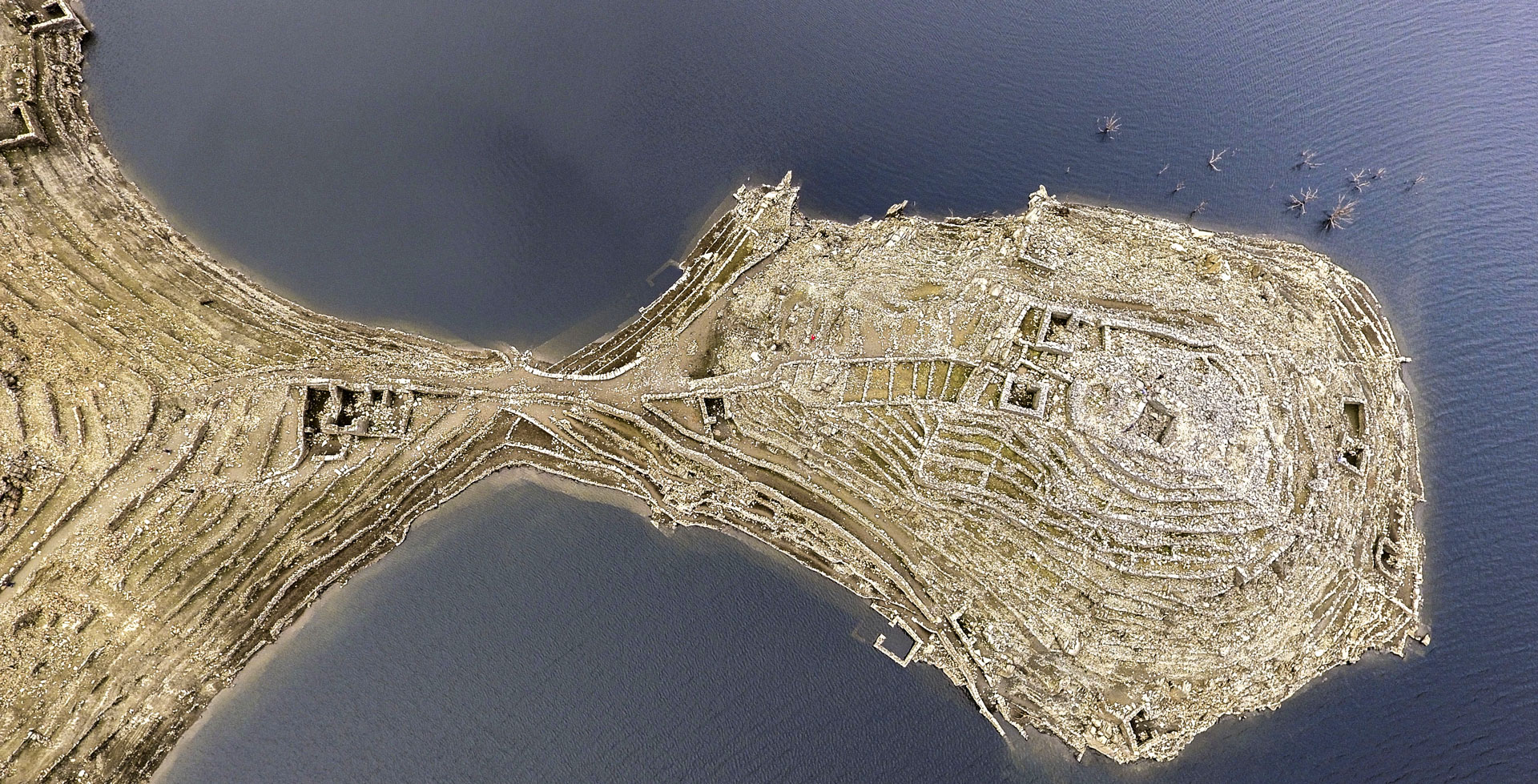
Casa das Xacias is located on the banks of the Miño, in Pesqueiras. It is a village with a wine tradition that, together with Sabadelle, Piedrafita and San Fiz, make up the parishes that are on the banks of the Miño de Chantada, and whose vineyards houses and lives were long ago flooded by water after the construction of the dam.
Today, in full S. XXI, despite the fact that many families had to leave, the banks of the Miño remain faithful to their traditions in this section, keeping the natural and cultural heritage of the area alive. Here both producers of good wines survive, as well as a “Pazo” from the S.XII in which culture alternates with Galician flavors. A series of terraces, chestnut trees, communal mountains or modern livestock farms that have been able to adapt through sustainable projects with the environment.
In this section of the River Miño, at the height of Pedrafita (Chantada), is the Castro Candáz, which we encourage you to visit. This pre-Roman fort converted later into a medieval fortress, can only be seen at certain times of the year due to the strong oscillation of the flow of the Belesar reservoir.
To get to the fort, you have to walk approximately one kilometer from the place of Xillán and walk between vineyards to discover part of the submerged memory that the rivers of the Ribeira Sacra treasure.
The Film Asolagados (2013), by film director David Vázquez, takes us to these towns that were flooded by the Belesar reservoir and that, thanks to some works carried out on the dam, were exposed again in 2011. The documentary take note of the testimonies of people who lived in those places before the construction of the dam and who had to leave everything. And it shows images of the Ribeira Sacra, the river Miño and the remains of houses, wineries, fruit trees and orchards that help us imagine what that riverbank of the Miño was like where salmon and lampreys came230kmfrom the Atlantic to the outskirts of Chantada: not in vain was it considered one of the best salmon rivers in Spain in the 1945 publication “The salmon and its fishing in Spain”. If what you want is to lose yourself and disconnect, this area of the river is the quietest and least crowded. With characteristic vegetation and vineyard landscapes, here you can enjoy the song of birds and observe, for example, a family of ducks entering the bushes.
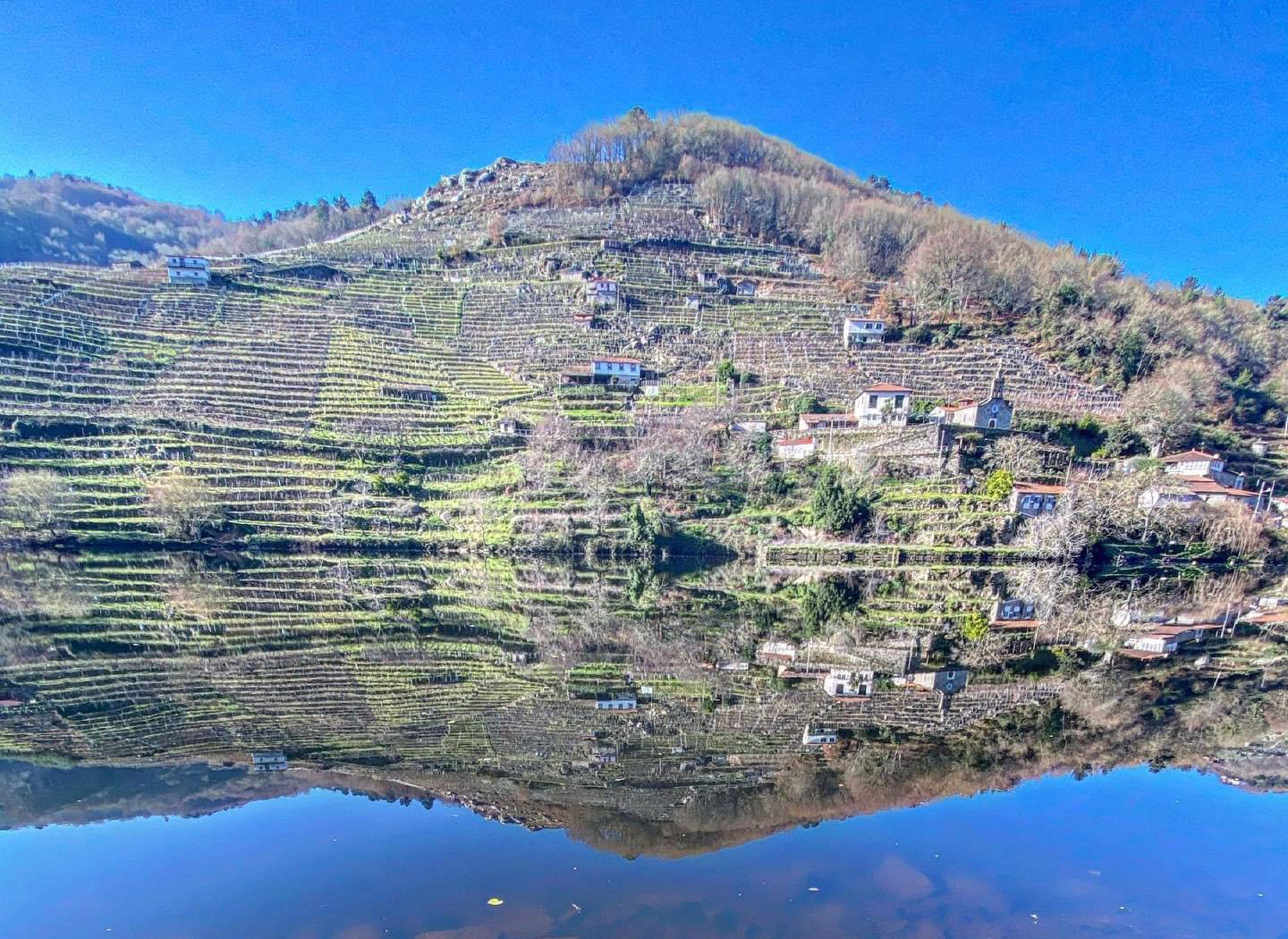
San Félix de Asma (San Fiz), where the Belesar dam is built, continues with its banks downstream and, before reaching Belesar, has the most valued area of vineyards in the Chantada area, the so-called Milla de Oro (golden mile). In this area you can see stone cellars with pitched roofs aligned with the mountain that, in the past, were used for viticulture on the riverbank. They also served as a shelter to store wine, eat or rest from the long and hard days of work, as well as to store work tools. Today many of them have been conditioned for the enjoyment of their owners and others to offer the experience to visitors.
After leaving the Milla de Oro, ten kilometres from Casa das Xacias, you will arrive at the unique small town of Belesar, which is located on both banks of the Miño. In this area you can take a river route on a catamaran, live personalized experiences aboard a Zodiac, enjoy the natural heritage, such as the Auga Caída waterfall and the vineyard terraces, and see the little villages that are found on both slopes. of the Minho. At the top of the Cabo do Mundo meander, next to a cypress, is the church of Santa María de Nogueira, a Romanesque construction from the middle of the S. XII with a major altarpiece from the S. XVIII Baroque style.
From Belesar, a road that runs alongside the river will take you to the recreational area of A Cova, where there is a river beach on the what are they taking water activities. Going up the mountain again, you will find, presiding over the valley above the River Miño, the Arxeriz Ecomuseum, a must-see. In it you can learn about nature and history, discover traditions such as the Entroido Ribeirao (riverside carnivals) and enjoy the outdoors. From the castro that crowns the estate you will have one of the best views of Cabo do Mundo, a landscape from a novel and the setting for literary works such as El Cabo del Mundo, by Xabier Quiroga, Critics Award in Galicia, or All this I will give you , by Dolores Redondo, winner of the 2016 Planeta Prize.
From Belesar you can also cross the bridge and venture along the narrow winding roads that run along the banks of Chantada and Carballedo until you reach Peares, where the Sil River flows. Here you can visit wonderful places. We recommend a stop at the Penedo do Garabullo, a huge cliff on whose side the Fondós River flows into the Miño in the form of a waterfall. Here is the only Mediterranean forest in the area, with holm oaks (Quercux ilex), cork oaks (Quercus suber) and strawberry trees, a landscape that merges with the vineyard terraces. Until the 1980s, cork was still extracted from cork oaks to make stoppers for wine bottles and vats. If you continue along the route, you will come across the A Grixoá viewpoint in a village that is now almost abandoned.
If you travel in spring, in addition to the green tones of the vineyard, you will be able to see in this area the white mantles that make up the cherry trees in bloom, so radiant on sunny days. It is another show that is worth enjoying in this area, which is especially striking in Belesar, Lincora, A Sariña and Nogueira.
At Casa das Xacias, the sakura, the flower of our cherry tree brought from the Jerte Valley and planted in 2005, also heralds the arrival of spring.



